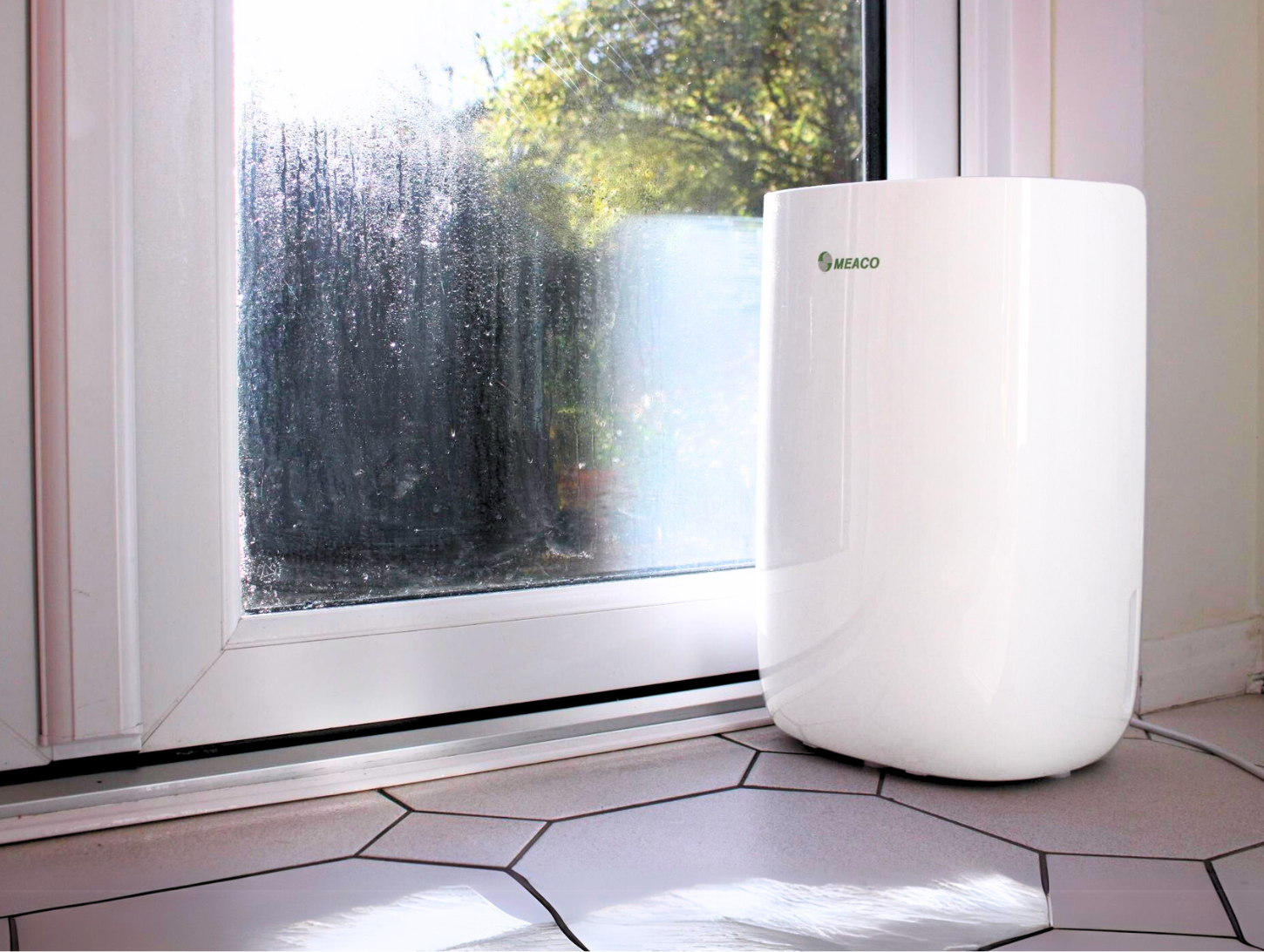
With the cold, there’s also condensation. When the temperature drops outside, generally below 5°C overnight, you’ll start seeing condensation on your windows. You may notice this most in the bedroom, kitchen, bathroom or conservatory, especially early in the morning. Stopping condensation is one of the biggest problems homeowners face.
So, how can you stop condensation? The two main approaches to ‘curing’ or ‘stopping’ condensation are either to open the windows or use a dehumidifier. Open the windows may give pretty instant results but we’re letting in the cold air and then paying to heat it back up. Dehumidifiers provide a fast, effective and cost-efficient way to manage condensation.
Opening windows to deal with condensation
You would probably expect me to recommend that you buy a dehumidifier. I am a dehumidifier manufacturer after all. But let’s look at the benefits of opening windows first.
In Germany, they call it “Stoßlüften”, meaning “shock ventilation” and they may have the right idea about things… When people worry about condensation or mould problems, the advice will often be to open the window. This is to improve ventilation.
However, in some older properties that are often quite ‘leaky’, we can see that condensation is rarely an issue. I mean that in properties with older windows, we don’t always see more condensation. These windows might let in some moisture and may not be fully draft-proof. However, condensation is about trapped moisture inside the house, not extra moisture coming in.
Opening windows can cure condensation – but do you want to let the cold in?
So why does ventilation help? Opening windows can stop condensation – but do you want to let the cold in?
First, what causes condensation on windows?
Essentially, condensation occurs when air meets a cold surface and forms water on that surface. And it’s all about the relationship between relative humidity and temperature. In most cases, the surface is the cold glass panes of your windows and the relative humidity is moisture within your home. It doesn’t matter how little moisture there is in the air – if the surface is cold enough, you will get condensation.
Your windows provide the perfect cold surface because they are in direct contact with the chilly outside. If you touch the window pane, you’ll feel the difference!
This is why my windows at home have been free of condensation for months. Now the temperature has dropped, I can suddenly see condensation. I doubt that the amount of moisture in the air in my home has increased. It is just that the surface temperature of the window is lower during a cold spell.
This is also why you’ll find double-glazed windows usually have less condensation than single-glazed ones. This is because the two panes form an insulated barrier. And as a result, the inside pane isn’t quite as cold and condensation is less likely to occur. Remember that double-glazing condensation can still happen, it’s just less frequent than single glazing. This does not mean your windows are broken but there are steps you can take to reduce it.
What is the science behind condensation: the relationship between humidity and temperature?
Condensation forming on cold surfaces happens because of the inverse relationship between temperature and relative humidity. As temperature falls, relative humidity increases and as temperatures increase, relative humidity falls. So if you heat air up, the relative humidity will decrease. This is the key to the reason why ventilation can help cure condensation.
So, there are two things helping to form condensation, the temperature of a cold surface (your windows) and relative humidity. Of these, which can we control in order to stop condensation?
Unless you have fancy heated windows, then the answer is relative humidity. You can do this in a few ways. Let’s start with opening the window.
Does opening the window stop condensation?
Ultimately, yes. You’ll quickly notice the condensation leaving the windows. The air in your home is full of moisture from cooking, bathing, showering, drying washing and even breathing. The air outside in winter will probably have a lower relative humidity. So when you open the windows, warm, damp air goes out and cold air comes in.
Condensation can build up easily on any cold surface, especially windows throughout winter.
But now your room is a lot colder and you don’t know whether the outside air has changed your room’s relative humidity.
Have we helped to reduce the condensation situation? The answer is still yes. If you’re having a hot shower and open the window a smidge, you can watch the condensation reduce dramatically.
It is also because we are not going to let the air stay cold. We will heat it up to a temperature that we are comfortable with.
Even if the air outside is freezing, I still want it to be about 20°C in my house but I’ve opened the window and let some of that cold air in. I will warm it up and I’ll turn the heating on.
And in the laws of science, increased temperature means decreased relative humidity. If we assume the incoming air is full of moisture, warming it up will reduce that relative humidity as well. Let’s say the incoming air has a relative humidity around 90%rh, increasing the temperature will reduce it down to something like 25%rh.
So, all is good! We have got rid of our warm damp air, replaced it with cold damp air and warmed it up. We now have warm dry air. There’s a cure for condensation.
Opening the windows will work and is an effective solution to condensation control.
But..
Think about what we have just done. We have heated the air, costing us money, and then we have thrown that heated air out of the window. It might have been easier to throw fivers into the street!
To replace it, we have introduced freezing cold air into our home and made ourselves feel very uncomfortable.
Now, we need to warm the cold air. This will help us feel comfortable again and lower the humidity. This costs more money in energy, and later in the day, we’ll have to do it all over again. In fact, ideally you will have to do this in every room in the house. You will certainly need to do it in the bathroom, kitchen and bedrooms at the very least.
Opening the windows does work but I am not a fan because of two reasons. One, it makes people feel uncomfortable. Secondly, there’s a huge hidden cost of reheating the fresh air coming in from outside. With energy bills skyrocketing it seems a real waste of money to keep on throwing the energy outside.
Is a dehumidifier a better way to stop or prevent condensation?
Yes, a dehumidifier is a superb way to manage relative humidity in your home and reduce condensation. Plus, a dehumidifier is the only way you’ll remove moisture. As we mentioned earlier: condensation occurs because of temperature and relative humidity. You are unlikely to control the temperature of your windows, but you can manage relative humidity with a dehumidifier. Making a dehumidifier an incredibly effective choice to prevent condensation.
Running a dehumidifier does of course have a cost to it. There is an initial price of the unit, and then there’s the electricity cost to run it.
But there is an important difference between the cost of running a dehumidifier and the cost of heating air.
MeacoDry ABC Dehumidifier extracting excess moisture and preventing condensation from occurring
- Some dehumidifiers create a little warmth while dehumidifying. Desiccant dehumidifiers create around 12°C which is ideal especially in garages and conservatories.
- If you’re opening the window and running the central heating, you’re potentially throwing hundreds of pounds away every year. The hot air often escapes through the window. You will just heat it up again later when you open another window.
- Finally, heating dry air is actually a lot cheaper than heating damp air. Read more: 7 Ways to Stay Warm, Save Money, and Delay Turning the Central Heating On
We use our dehumidifiers mainly in the winter when condensation is at its worst. It’s freezing outside which provides the perfect cold surface on your windows to condensate. And we are closing the windows and doors, trapping moisture in our home. This is the perfect recipe for condensation.
In the winter, it is cold and we need to heat our homes. The energy used by the dehumidifier is returned to the room that it is standing. And that energy is in the form of warmer air.
So the cost of running a dehumidifier is retained within your home. If you have a radiator within the same space as the dehumidifier, you can turn it off – helping to keep your energy bills down. So where is the cost of running the dehumidifier if you are benefiting from and enjoying the heat that it generates?
Read more: How much does it cost to run dehumidifier units? Less than you think!
How do deal with condensation in a conservatory
Condensation in conservatories is a hugely common problem for homeowners. It’s a room of windows, creating that perfect cold surface. It’s unheated so we’re not reducing the relative humidity by increasing temperature. And it’s just as likely as the rest of the house to contain moisture.
Both solutions work well for reducing condensation in these spaces: opening windows and running a dehumidifier. But if you want to proactively prevent condensation in a conservatory? My best recommendation is to manage your relative humidity with a desiccant dehumidifier.
Read more: How do I prevent condensation in a conservatory?
A dehumidifier is a fast, effective and cost-efficient way to stop condensation. Opening the windows may seem to be the easy – and free – solution, but it’s not quite as cheap as it looks!
We recommend…
- Compact and stylish dehumidifier
- Quiet Mark – from just 36dB
- Eliminates moisture – ideal for damp, mould and condensation
- Shop now
Meaco Low Energy Dehumidifiers
- Low cost to run – 4p / hour based on 24.50p / kWh
- Quiet Mark Award – up to 41 dB
- Tackles damp, mould and condensation
- Shop now
Meaco DD8L Desiccant Dehumidifier
- Superb at removing condensation from windows
- Desiccant dehumidifier
- Provides additional warmth & offers high performance
- Shop now
Browse all dehumidifiers.

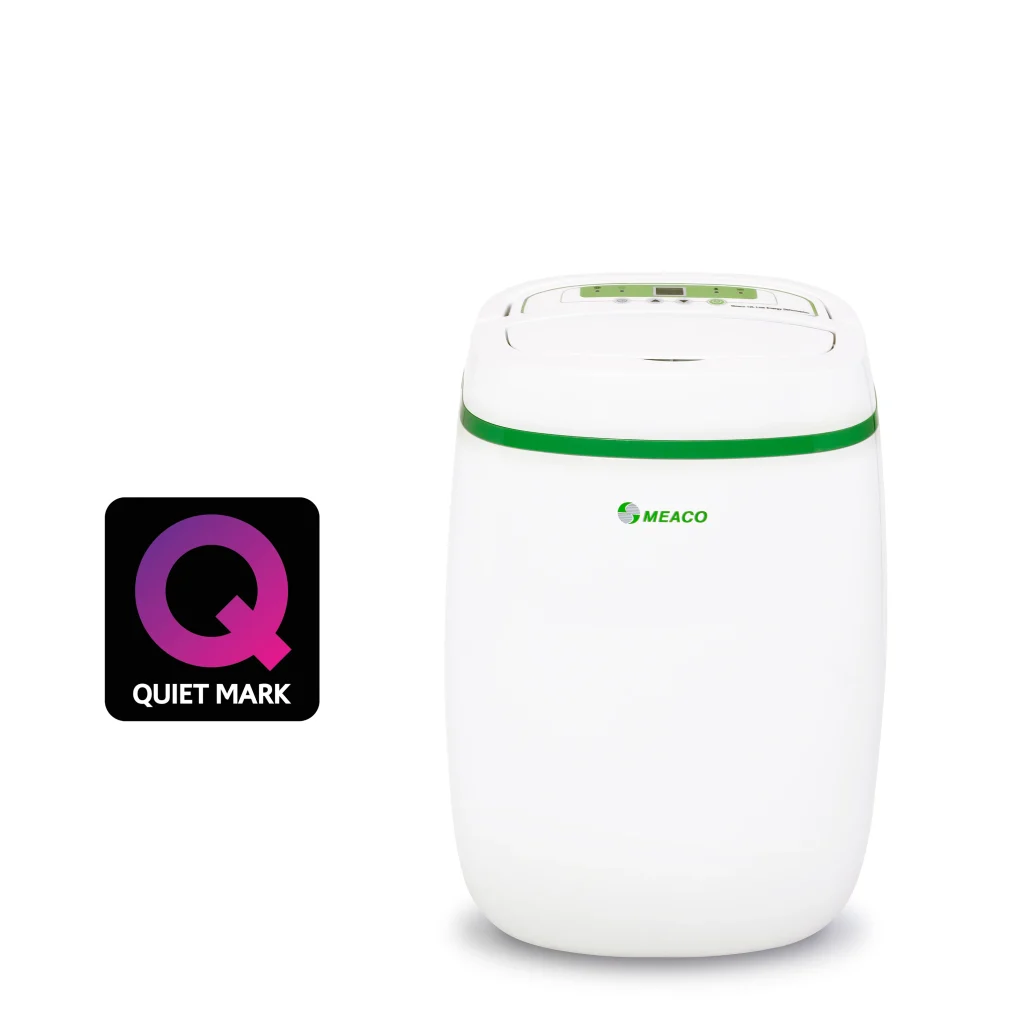
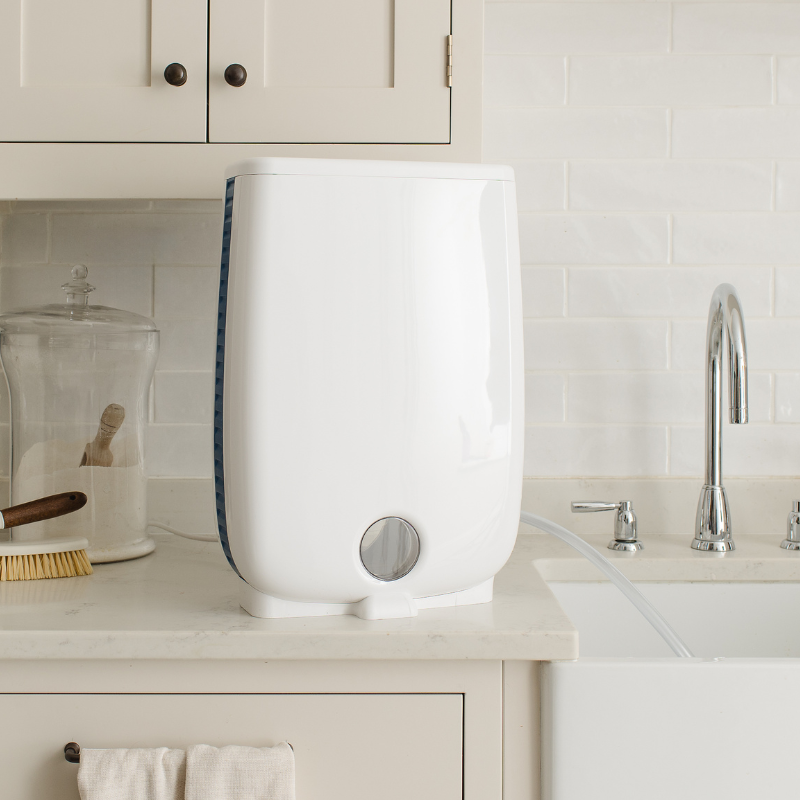





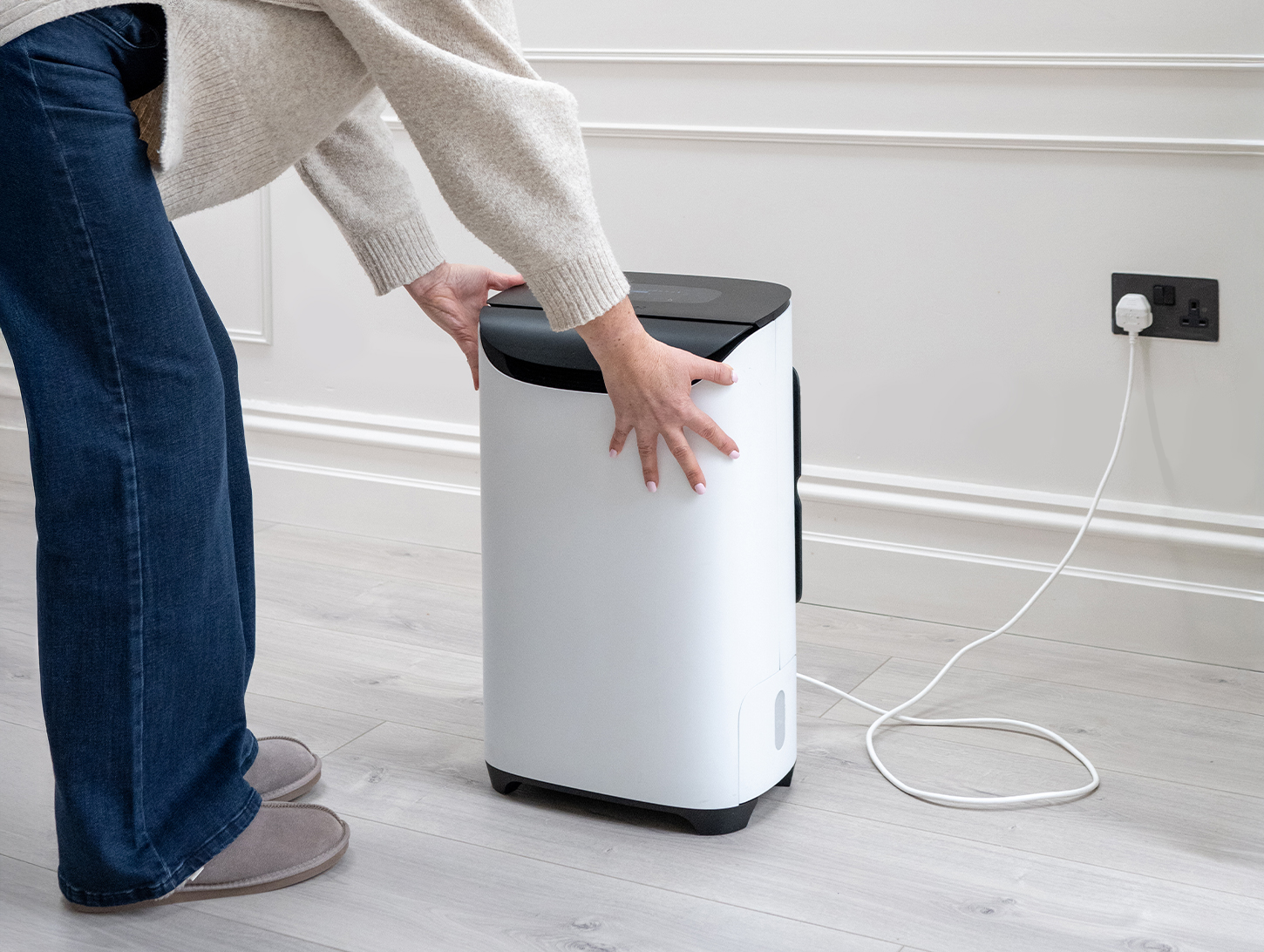
215 responses
Hi – thanks for such an informative blog!
I’d love your thoughts: We’ve just moved into a 2 bedroom, 2 storey Victorian mid-terrace house (75 square metres). Every morning, the bedroom windows look like it’s been raining inside with the condensation – the other windows in the house have a little condensation on them, but much less. We’ve also noticed a musty smell coming from the windows which means the mould is starting up…
A heating engineer said ventilation might help but probably not, because the sash windows are single glazed and it’s just cold outside and warmish indoors (I need to insulate the loft and front door). There’s a good bathroom extractor fan and a dodgy kitchen extractor fan, and cracks in the render outside (kitchen wall) which need to be fixed (small damp patches).
So, I’d love to know: which dehumidifier would help? Would it do the whole house? And where should I put it? In the bedroom as that’s where it’s worst/where there’s a mouldy smell?
Thank you!!!
Lucy,
Buy the MeacoDry 12L ABC as this is the quietest dehumidifier and is the one you want to use in and around the bedrooms. This will make a huge difference but you will still get some condensation because they are single glazed windows.
https://www.meaco.com/dehumidifier/home-dehumidifiers/meacodry-abc-range-12l-compressor-dehumidifier
Chris
Hi Chris,
I have a terrible flatulence issue in the evenings which often causes severe condensation along my bedroom window sill as well as a green discolouration on the glass and thick mould developments around the seal.
Please could you advise me if your dehumidifiers could solve this?
Kind regards,
Luke Wright
Luke,
The two problems are probably not related to be honest. The condensation and mould will be caused by excess moisture in the home in general from bathing, washing, cooking, drying laundry etc. I have never heard of anyone being able to generate significant amount of moisture themselves from anything other than exercise or breathing.
If you do order a dehumidifier for the condensation and an air purifier for the odours then we will include a free gift for you from here – http://www.myshreddies.com.
We wish you well.
Chris
Hi Chris,
Firstly thank you so much for this article. Myself and my sibling moved back into our family home about 10 years, after leaving in the property for 10 years previously.
In the last 10 years we have noticed that the damp has increasingly worsen. In fact, we never previously had damp when we lived in the flat as a family, so we are at a loss as to why there is so much damp now.
The damp is prevalent around the windows in the bathrooms, the ceilings and window in the bathroom, and it is starting to occur in the living room window.
For the longest, i’ve assumed that this damp is due to the insufficiency of the building itself. We live in a old estate which has no cavity in the walls, meaning the building is often very cold.
Now during the summer the damp doesn’t exist, but during the winter, the windows are kept closed because the flat is freezing otherwise. In fact windows are badly damaged and in some cases the windows cannot be opened.
Also, as we live in a flat everyone’s bedroom doors are closed, so i imagine this effects the airflow in the flat.
I am trying to find a solution to the damp and I recently had a surveyor and the suggestion was to install a dehumidifier. But we cannot install one without the local council’s permission. Therefore, we need to find another solution. What would you suggest? Especially with the bathroom, which is especially worse. We have treated the damp, repainted the bathroom, but the damp keeps coming back. There is an extractor in the bathroom, but it is woefully insufficient. Again we would like to replace this, but cannot without council permission. If you are based in london, I would happily have you come down and take a look.
Desperately seeking solutions and awaiting your feedback.
Aisha
Aisha,
Thank you for your message. It sounds like your problem is being caused by a lack of ventilation. A dehumidifier does not require installation so you will not need the councils permission, just plug it in and turn it on. You can test if your extractor fan is any good or not by placing a piece of paper in front of it, the force of the fan should make the paper stick to the fan. If the paper falls to the floor then the fan is not doing it’s job. Try to open a window for 15 minutes after cooking and showering to let some of the damp air out.
If you do get a dehumidifier then try and leave the internal doors open as often as you can.
Getting a dehumidifier and opening windows for 15 minutes will make a massive difference.
Chris
Hi Chris,
I have recently moved to a 4 bedroom house with my family and the house was great during the summers but since winters started i could see too much condensation on the windows and due to that temperature of the house is around 14-15C if I don’t turn on heating. Even when we turn on heating the temperature of the house doesn’t stay warm for long and temperature drops again in few hours. I asked my landlord to change glasses of the windows having condensation problem but he is saying that dehumidifier is a better solution. Also we have mould near the windows with condensation.
I need to your advise to address my below concerns please:
1) Is dehumidifier safe for kids? i have 2 boys (4 year and 1.5 year) and one baby upcoming in January. I heard that dehumidifier can dry the air too much which could cause problems to kids like eczema, sore throat etc.
2) Will it solve my above mentioned problem if i buy 20L Low energy compressor dehumidifier? i need around 20C temperature in my house. Is it available in Republic of Ireland as well as i live in Cork?
3) How many hours or frequently do i need to run the humidifier for a comfortable house? what should be ideal humidity level in a 4 bedroom house with 5-6 people living?
Many Thanks
Rahim
Rahim,
Thank you for your message. A 20L Low Energy dehumidifier is available from chmarine.com in Cork and will sort your problem out for you. They are perfectly safe to use around children and they do not dry the air to a level whereby you will suffer from any of the things you have listed. Make sure that you have a working extractor fan in the bathroom and kitchen and that you are using them. Opening the windows in the kitchen and bathroom for 15 minutes after use will also help control the amount of moisture in the home.
Chris
Hi Chris
ITo avoind condensation is it better to leave the heating on or off over night in rooms which are not being used?
Thanks
Anna
Anna,
Thank you for your question. Putting the heating on will achieve two things, the surface temperature of the windows will increase (if the radiators are underneath the windows) and the relative humidity of the room will reduce. The extent to which this will solve the problem will depend on the quality of the windows and the amount of moisture you are putting into the air.
Chris
Hi chris we have moved into a 2 bed house we dry our laundry in the conservatory with the windows open but doors closed the humidity in our living room ranges from 60-70% we have a bay window in living room which is getting condensation on the skirting board if I run my finger across it it is damp and carpet around that area has a slight dampness to the touch this only happens in the winter. Is our laundry drying in the conservatory making this worse as we also have a open plan kitchen so no door to close so the heat from kettles,cooking,sterilliser and washing machine would come into living room what can we do if we get a dehumidifier what one should we get, where should we put it and we really need one that is cheap to run what do u suggest please help
Michelle,
Thank you for your comment. You need the Meaco 20L Low Energy dehumidifier. This will be the cheapest dehumidifier to run, it will dry the laundry quickly and it will not mind the conservatory dropping in temperature at night. If you have an extractor fan in the kitchen then use it as much as possible and/or open the windows after cooking for 20 minutes. The dehumidifier could also be positioned between the kitchen and the lounge to capture the moisture and just moved to the conservatory when you have clothes to dry.
Hope this helps.
Chris
Hi. I’ve see you said about running a dehumidifier 24/7 for bedroom condensation problems. I’m not comfortable leaving something running at night. If I did it during the day and turned off before bedtime would this still help or would it be better to do it in the night? The main issue is it’s an end of terrace house, the back corner of the house doesn’t face the sun so gets cold day and night then sleeping in there brings condensation on the windows and the wall inside (which is the outer wall) in the mornings when we wake up. Any advice would be appreciated!
You could leave it running on the landing/hallway at night, it does not have to be in the bedroom. As long as you leave the internal doors open for as long as possible each day then the damp air will migrate towards the dehumidifier.
If you are still not happy then just run it for as long as you can each day.
Chris
Hi Chris
We have a 5 bedroom bungalow. Bedrooms at one end of house and then an internal door separating this end from an open plan kitchen, dinning, living room, conservatory (which has no door). Our condensation issue is in this open living area where we dry clothes, cook etc etc. Would the smaller 12L machine be OK for this area or would we need the 20L?
Many thanks
Lou
Lou,
If you are a family of three then go for the 12L, anymore then it should be the 20L.
Chris
I had new double glazed windows fitted July 2018. It is a one bedroom flat no wndow in bathroom or kitchen but a powerful exractor fan. The Window in bedroom and lounge are square bay Windows wooden cladded. We face south and in the summer the interior glass gets very hot the and now it’s winter the glass is e extremely cold. I have at least 2 inches of water on the glass in the mornings and even worse in the bedroom. The Window fitter says it’s the fault of the bays yet no other flat has this problem. A bit of misting at the bottom perhaps but never water. We are very conscious of moisture as we have a over 1000 antiquarian books so always open windows when cooking always use fan always leave bedroom and lounge doors open never dry washing (there is a communal laundry room) so why do we get water forming on Windows when temperature falls. Hoping you can advise.
Godfrey,
At the end of the day condensation happens when the right level of relative humidity comes into contact with a colder surface. So you can either have high levels of humidity coming into contact with a relatively warm surface or low levels of humidity coming into contact with a very cold surface. Both will result in condensation. If you have high levels of humidity and a very cold surface then you have loads of condensation. So you can either increase the surface temperature of the windows (difficult to do), keep the air flowing around the windows (open trickle vents if you have them) or reduce the amount of humidity in the home. This is where a dehumidifier comes in and the MeacoDry ABC 12L would help you.
regards
Chris
Hi Chris, I have just purchased the Meaco DD8L for my narrowboat during the winter (I don’t live aboard the boat). I have read on one or two forums that some people advise blocking up the vents on the narrowboat when using a dehumidifier, to prevent it drying to dehumidify the world. I understand that closing the windows and external doors would be necessary, and they would be closed anyway when I am not on the boat. However, do you think the vents in the doors and ceiling should be blocked too? Thanks, David
David,
Damp air will migrate to a dry spot and therefore running the dehumidifier on the boat will attract damp air to come in and this will increase the work that the dehumidifier has to do and at marina electricity rates you can see why people will want to keep running costs down.
I think a compromise is best, block up the large holes but keep some small vents open just in case you are not getting even airflow of the dry air from the dehumidifier around the furthest points in the boat.
Hope this helps.
Chris
Hi Chris.
I hope you can help me with some advice.
I have a 3 bed end of terrace that suffers with condensation in 2 bedrooms and in the down stairs living areas. Clothing and furniture occasionally seem to feel damp also.
I currently have a 10L a day dehumidifier but have never ran it 24/7 like i see you advised alot above. It has a humidity sensor so im guessing turns off automatically.
Should i have the dehumidifier turned on 24/7? And if so what should i set it at. 60, 50 or 40%?
My Windows are 3 years old, dont have trickles but can be locked in a just open position. Which position should i use now the temperature is dropping?
I currently have my thermostat set to auto at 19*c.
Your advise would be much appreciated.
Josh
Josh,
If you are having problems then you need to run your dehumidifier for longer. Setting it to 40%rh until you feel that the problem is under control and then leaving it at 50%rh is sensible. Make sure that the internal doors are oprn so that the air can circulate. Leave blinds or curtains open during the day and put effected windows open a little to allow the fresh air to flow through over the windows. If you dry washing indoors then dry it next to dehumidifier and if your dehumidifier has a laundry mode then use it when drying the washing.
Chris
Hi Chris. I’ve had the Meaco ABC for over a year now. It’s amazing.. it really has made an enormous difference. I think the machine could be even better if it was smart home compatible. If I could connect it to my Hive (and/or Alexa) I could set proper timers as the current, one time, timer on the machine isn’t a great solution. It would be smart to set different RH levels for each time slot. Also the machine could switch off automatically when I open a window (using the Hive window sensors). Finally I could monitor the RH from my phone when I’m not at home. Then, if the drainage outlet is also used, this would make it a truly plug-in-and-forget machine. (apart from hoovering the filter from time to time).
Peter,
Thank you for the feedback. I understand where you are coming from but to be honest the number of people that have asked for such functionality could be counted on one hand so we are not seeing the demand. One important point to make is that no-one should ever use a smart plug to contriol any dehumidifier as these prevent safe shutdown and reduce the working life of the machine.
Chris
Hi Chris, I am struggling to resolve an issue with your customer services team. Can you let me know how to contact you to discuss? Thanks. Paul
Paul,
Thanks for your message. I’ve checked our records but couldn’t find any emails from you using the email address provided in your profile here. Our customer service team are handling an incredibly high volume of enquiries thus if you’re just experiencing delays in response time, please bear with us as this is an exceptionally busy period. We’re doing our best to respond as quickly as possible. If you haven’t yet – get in touch via email or by giving us a call.
Thanks for your patience during this busy time.
KR,
Omar@Meaco